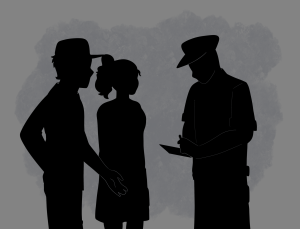Holiday Movie Catchup: A Look at this Winter’s Best
“Joy” is worth cheering for, “The Force Awakens” dazzles and “The Hateful Eight” just barely misses the bullseye.
January 28, 2016
With most of 2015 holiday releases wrapping up their box office runs, it’s time to look back at three of the better films to grace theaters this past Christmas: the David O. Russell-directed biopic “Joy,” the highly-anticipated box office smash “Star Wars: The Force Awakens,” and Quentin Tarantino’s second foray into Westerns, “The Hateful Eight.”
“Joy,” starring Jennifer Lawrence (“The Hunger Games”), is a fictionalized telling of the early life of Joy Mangano, the woman who invented the self-wringing Miracle Mop. Joy, as played by Lawrence, is introduced as the struggling matriarch of her household, trying to handle the pressures of not only her job, but also her two young children, her feuding divorced parents and her ex-husband, all of whom live under the same roof. While cleaning a mess of spilled wine and shattered glass, Joy, whose hand is cut by glass while wringing her mop, is inspired to create a mop that can wring itself. From there she plunges into a world of incompetent TV marketing, distrustful family members, and corporate theft as she tries to get her product out to market without losing control of it.
without losing control of it.
Director Russell, who previously collaborated with Lawrence in “Silver Linings Playbook” and “American Hustle,” quickly lets his audience know that “Joy” is hardly a traditional biopic, with some surreal turns (such as when Joy dreams herself as a character in her mother’s favorite soap opera). The narrative, however, is still easy to follow, and Lawrence’s powerful performance elevates the movie to a higher level. The movie belongs to Lawrence, and her emotion and drive flow out of the screen and into the audience. Any viewer will be hard-pressed not to cheer at Joy’s success, bemoan her frustrations or seethe at those who would oppose her. For all its oddities, it’s a tried-and-true story of success, and with admirable direction and a powerful lead performance, “Joy” certainly earns its name.
With a box-office tally approaching $2 billion, it seems as though nearly everyone has seen “Star Wars: The Force Awakens.” The film, which hews closely in tone and style to the original “Star Wars” trilogy, is unlikely to convert those already opposed to the franchise, but most fans will find the film a refreshing return to form following the odd creative choices made in the prior three entries in the saga, the notorious prequels. (Deesa movie no hassa any Jar-Jars, okee-day?)
“The Force Awakens” features the return of many original cast members, most notably Harrison Ford as Han Solo, and while they certainly give memorable turns this time around, it’s the new characters who make this film. John Boyega (“Attack the Block”) and Daisy Ridley (previously an unknown) make their respective characters of Finn and Rey household names with their energetic and excited performances, and Adam Driver (“Inside Llewyn Davis”) accomplishes the difficult task of creating a villain worthy of succeeding the iconic Darth Vader with Kylo Ren. The plot beats are familiar, but not to the point of distraction – the characters are the show here, and the result is a winning entry in the “Star Wars” universe.
in the “Star Wars” universe.
Following the success of “Django Unchained,” Quentin Tarantino presents a very different type of Western with “The Hateful Eight.” While “Django” was an all-out, guns-blazing action film, “Hateful Eight” is a far slower film, where the characters do more talking than their weapons. Despite its daunting 3-hour running time, the film runs exceptionally smoothly–Tarantino again displays his penchant for creating dialogue that flows well and hooks audience attention. In fact, a particular scene involving Major Marquis Warren (Samuel L. Jackson) explaining his encounter with a former Confederate soldier to said soldier’s father (Bruce Dern) is executed so well that it may become one of Tarantino’s most iconic moments.
Unfortunately, “The Hateful Eight” suffers from a twist ending that doesn’t quite work, as it makes the actions of many characters in prior scenes rather confusing. Still the film is gifted with stunning cinematography (this is a film worth seeing on the big screen) and a fantastic musical score by noted composer Ennio Morricone (“The Good, the Bad, and the Ugly”). It’s absolutely worth a watch, but it’s a shame the ending was not as well thought out as nearly all of the film’s other features.
All three of these films come at a strong recommendation.






